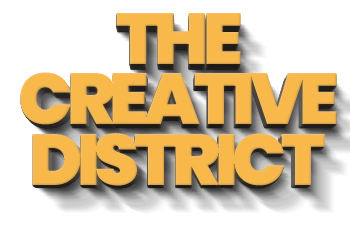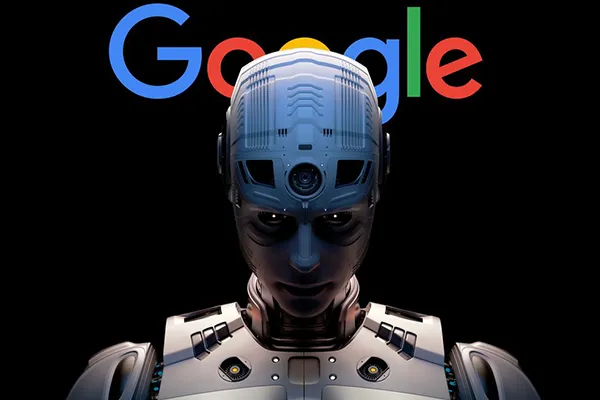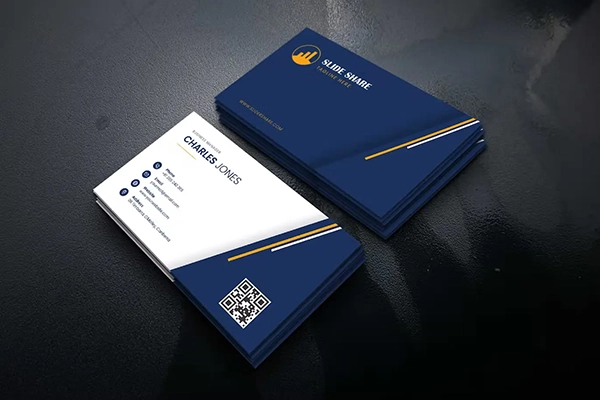Even if your website is ranking in Google it doesn’t guarantee your website is being seen or cited by AI bots. If your site is bloated with page-builder code (like some wordpress and wix sites are) AI crawlers may struggle to process it and move on.”
Fact‑check this with ChatGPTAI crawlers like GPTBot don’t behave like traditional search engine bots such as Googlebot. Most don’t parse JavaScript at the same level as Google, so any content that loads dynamically may be skipped. On top of that, many AI crawlers are not designed to parse deeply nested or bloated code often produced by page builders and heavy themes. They primarily rely on scanning the raw HTML that’s returned, which means sites with clean, semantic, easy-to-parse markup are more likely to be understood and surfaced.
Some AI crawlers (like GPTBot) don’t fully render JavaScript, so if your site relies heavily on dynamic loading or page-builder code such as elementor, there’s a risk that important content may not be captured. Google itself notes that JavaScript can be a barrier for crawlers, and OpenAI’s documentation confirms GPTBot primarily parses static HTML rather than executing scripts.
And its not just AI even though Googlebot can execute heavy javascript it also has its limits. Each site has a crawl budget — essentially the amount of time and resources Google is willing to spend crawling it. The heavier and slower your site, the more likely Google will crawl fewer pages and less often. So a heavy site not only slows down indexing and updates, but also means your site could be crawled less frequently compared to a faster, cleaner site. In short: bloated code doesn’t just hurt AI visibility, it can reduce how effectively Google crawls and understands your content too.
🔍 Optimizing for AI Visibility Isn’t the Same as Traditional SEO
For years, SEO has focused on Google — targeting the right keywords, building backlinks, ensuring mobile-friendliness, meeting Core Web Vitals, and using proper metadata with well-structured content
And these are still the vital fundamentals of SEO but AI is introducing a new layer of optimisation. Its focused less on ranking in search results and more on being clearly understood, extracted, and cited by AI models like ChatGPT, Google’s Gemini, Claude, and Perplexity.
Here’s where things differ:
| Traditional SEO | AI Visibility |
|---|---|
| Rankings in Google SERPs | Inclusion in AI answers and summaries |
| Rendered content is fine (Googlebot can parse JS) | Raw HTML is king — many AI bots rely on it, and may miss JS-only or dynamic content. |
| Focus on crawl depth, backlinks, and authority | Focus on content clarity, structure, and semantics |
| Thin pages may rank if linked well | Thin or bloated pages are ignored by AI |
| Keyword density and variation | Clear formatting, lists, tables, and schema |
Think of Google as a near crawling genius — it’s had over 20 years to learn how to crawl, render, and evaluate your website, but even it can struggle with overly complex setups
Now think of AI bots as the new machine in town — powerful, yes, but still early in its development. It doesn’t handle complexity well. It prefers information to be fed in a clean, simplified structure.
If your site is buried in thousands of lines of bloated, complicated code, there’s a good chance AI won’t bother digging through it to find the answers it needs.
WordPress & Joomla
Keep in mind, not every WordPress or Joomla website is the same. A well-optimised WordPress site — preferably built with the native Gutenberg editor — can be extremely lightweight. When paired with clean code, strong SEO, and proper schema, it can perform very well Google and AI crawlers such as ChatGPT or Perplexity.
The real issue is that many WordPress sites today are built with heavy page builders like Elementor or Divi. These often generate thousands of lines of unnecessary code, slow down performance, and make it harder for both Google and AI bots to interpret your content. In short: WordPress itself isn’t the problem — it’s how the site is built and optimised that makes the difference.
But for most small business owners, a static website built with clean HTML will usually be the best option — unless you absolutely need the ongoing flexibility of a content management system. Static HTML sites load incredibly fast, are almost effortless for AI crawlers to understand, and come with far fewer security risks because they don’t rely on plugins, databases, or constant updates. They also give you complete control over the code, meaning no hidden bloat, no slow page-builder frameworks, and no unexpected conflicts. For many businesses that simply need a fast, visible, and trustworthy online presence, HTML offers the perfect balance of performance, security, and clarity.
🚫 Common Reasons AI Bots Might Ignore Your Site
Even if your website looks great to people, it might be difficult for AI bots to read or understand. These bots don’t work like Google — they’re much simpler, and they need clean, easy-to-read content.
❌ 1. Too Much Code
If your site is built with a page builder (like Elementor or Divi), it’s often packed with extra code. AI bots don’t want to dig through thousands of lines to find your message — they move on.
❌ 2. Content Hidden by JavaScript
Some parts of your site may only load after someone clicks or scrolls. AI bots don’t wait — if the content isn’t there right away, they miss it.
❌ 3. No Clear Structure
If your page doesn’t use simple headings and clear sections (like “Benefits”, “FAQ”, “Pricing”), it’s hard for AI to understand what’s important.
❌ 4. Too Much Styling
Excessive animations, popups, or styling may look great to people but add noise for crawlers. AI bots care about the text and structure, not the bells and whistles
❌ 5. Missing Key Info
If your page doesn’t include helpful answers, step-by-step guides, or FAQs, there may not be anything worth pulling into an AI answer.
How to Make Your Site AI-Friendly
1. Use Clean, Semantic HTML. Web design has gone full circle. If you don’t need wordpress or other builders then don’t use them. Standard HTML websites work amazingly well
| Benefit | Static HTML | WordPress / Page Builders |
|---|---|---|
| Speed | Extremely fast, no backend or bloat | Can be slow without heavy optimization |
| AI Crawlability | Simple structure, easy for AI bots to read | Bloated code may confuse or block AI bots |
| Security | No plugins or databases to hack | Higher risk from plugins and themes |
| Maintenance | No updates or plugin conflicts | Requires regular updates and backups |
| Control | Full control over every line of code | Limited by the builder’s structure |
💡 Tip: If you need WordPress for blogging, eCommerce, or editing — no problem. You can still improve AI visibility by building your homepage and main pages in static HTML, and using WordPress just for your blog, product pages, or backend content. This gives you the speed and clarity AI bots love, while keeping the flexibility WordPress offers where it’s needed most.
2. Reduce JavaScript Dependency. Avoid hiding key content behind tabs, accordions, or lazy-load widgets
3. Add Structured Data (Schema). Schema (also called structured data) is extra code you add to your website to help search engines and AI bots understand the content on your page.
4.Speed Up Your Site. AI bots may abandon slow-loading or overly complex pages. Again static HTML websites work great here
5. Make Key Pages Static. As mentioned above consider converting your homepage or main landing pages to HTML and keeping wordpress/page builders active for more complex areas of your site.
🌐 What Helps Your Website Get Noticed by AI?
Even with a clean, structured website, AI tools still need a reason to find you. Here are a few ways to boost your visibility beyond just your own site:
✅ Mentions on Local Blogs / Backlinks
When another website links to yours — whether in a blog post, article, or resource list — it’s called a backlink.
High-ranking, relevant backlinks from non-spammy sites carry significant weight.
Local .ie backlinks can be particularly valuable for Irish businesses, as they signal local relevance and authority in Google search. While AI tools don’t publish how they weigh local domains, it’s reasonable to assume that strong, reputable local links and citations help build the same kind of trust that improves visibility across both search engines and AI-driven platforms.
Even one or two quality backlinks from local, niche-relevant blogs can make a noticeable impact.
✅ Google Reviews
If you run a local business, positive Google reviews (with detailed text) can help you show up in local AI answers.
✅ Online Reviews and Directories
Being listed on industry sites, directories, or review platforms (like Trustpilot, Yelp, etc.) adds trust signals.
✅ Social Media Activity
If your content is being shared or mentioned on platforms like Reddit, LinkedIn, Twitter/X, or public Facebook and Instagram pages, it increases your chances of being picked up by AI-powered search tools like Perplexity, Bing AI, or ChatGPT.
Public content that gets traction or discussion often ends up in AI datasets — especially if it’s also linked to your website.
N:B make sure your social media business pages and posts are set to public. AI bots can’t log in — they only see public-facing content.
✅ Conclusion: Keep It Simple, Make It Visible
AI search isn’t just the future — it’s already here. Tools like ChatGPT, Google’s AI Overviews, and Perplexity are changing how people find information online. And while your site might rank well in Google today, that doesn’t guarantee it will be seen or cited by AI bots.
The good news? Much of what Google rewards — clarity, speed, structure — also improves your chances of being cited in AI answers.
So you don’t need a massive budget or a technical background to get noticed. You just need to make your content clear, fast, well-structured, and easy to read — for both humans and machines.
Whether that means simplifying your layout, switching key pages to static HTML, or earning just a few local backlinks — small steps can make a big difference in how AI tools discover and trust your site
Sources
AI Page Ready – Why AI Crawlers Prefer Static HTML
JavaScript & SEO! How to make dynamic content crawlable
Speed is a ranking factor – Google Developers
How ChatGpt Crawls and Indexes Your Website
Why AI models prioritize high-quality, efficiently crawled pages



